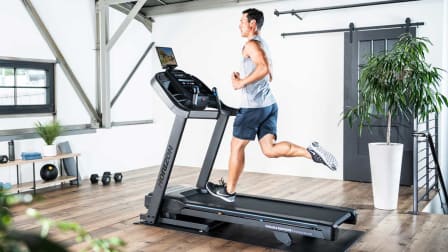How to Get Active Again After a Break
Whether you've recently lost your routine or are just looking to get back in shape, these simple strategies will help

It’s perfectly fine to take a time out from being active—and it may even be advisable if you’ve been ill or you’ve had an injury. But the benefits of exercise are too important to allow a hiatus to become the new normal.
“Exercise is a miracle ‘drug,’ ” says Keri L. Denay, MD, lead author of a recent American College of Sports Medicine advisory that encourages Americans to not overlook the benefits of activity during the pandemic.
Moving your body has been shown to reduce anxiety and depression, lower rates of many types of cancer and the risk of a heart attack, and improve overall immunity. It also helps build strength and stamina.
Talk With Your Doctor
This is a must if you have a chronic health condition, such as a heart or kidney problem, or diabetes, or if you’re recovering from an injury, or COVID-19 or another serious illness. But it’s also a good idea if you’re generally healthy—your doctor may have personalized advice to help you get the most out of your efforts.
Start Low, Go Slow
Don’t try to go back to what you were doing before your break. If you were walking 3 miles a day, playing 18 holes of golf three times a week, or lifting 10-pound dumbbells for three sets of 10 reps, reduce activity to ½ mile every other day, or nine holes of golf once a week with short walks on other days, or use 5-pound dumbbells for one set of 10 reps.
Increase time, distance, and intensity gradually. “This isn’t something you can do overnight,” Denay says. But you’ll reap benefits such as less anxiety and improved sleep right away.
Listen to Your Body
If you’re breathing too hard to talk in complete sentences, back off. If you feel good, go a little longer or faster. Feeling wiped out after a session? Go easier next time. And stay alert to serious symptoms, such as chest pain or pressure, severe shortness of breath or dizziness, or faintness, and seek medical attention immediately.
Make It a Habit
Consistency is the key to getting stronger and building endurance and stamina.
Ten minutes of activity per day is a good start, says Marcus Jackovitz, DPT, a physical therapist at the University of Miami Hospital. All the experts we spoke with highly recommend walking because it’s the easiest, most accessible form of exercise. Although it can be a workout on its own, if your goal is to get back to Zumba classes, tennis, cycling, or any other activity, walking is also a great first step.
Round Out Your Routine
Combine cardio exercise, such as walking, with strength training to keep your muscles and bones in optimal shape. It can be as easy as standing up and sitting down from a chair five to 10 times.
For your upper body, do five to 10 pushups against a wall or high counter. Or use low-cost resistance bands, which allow you to do more exercises than dumbbells do and take up less space.
Go Through the Motions
Even if you can’t yet do a favorite activity, you can practice the moves. With or without a club or racket, swing like you’re hitting the ball. Paddle like you’re in a kayak or canoe. Mimic your favorite swimming strokes. The action will remind you of the joy the activity brought you and prime your muscles for when you can get out there again.
Don't Go It Alone
Exercising with others “can keep you accountable and make it more fun, so you’re more likely to do it again,” Jackovitz says.
You can do activities such as golf and tennis or take a walk with others and still be socially distant. But when you can’t connect in person, consider using technology. Chat on the phone with a friend while you walk around your neighborhood. FaceTime or Zoom with a relative as you strength train or stretch at home.
You can also join a livestream or on-demand exercise class. SilverSneakers offers them for older adults, or try EverWalk for virtual challenges.
Editor’s Note: A version of this article also appeared in the January 2021 issue of Consumer Reports On Health.




















